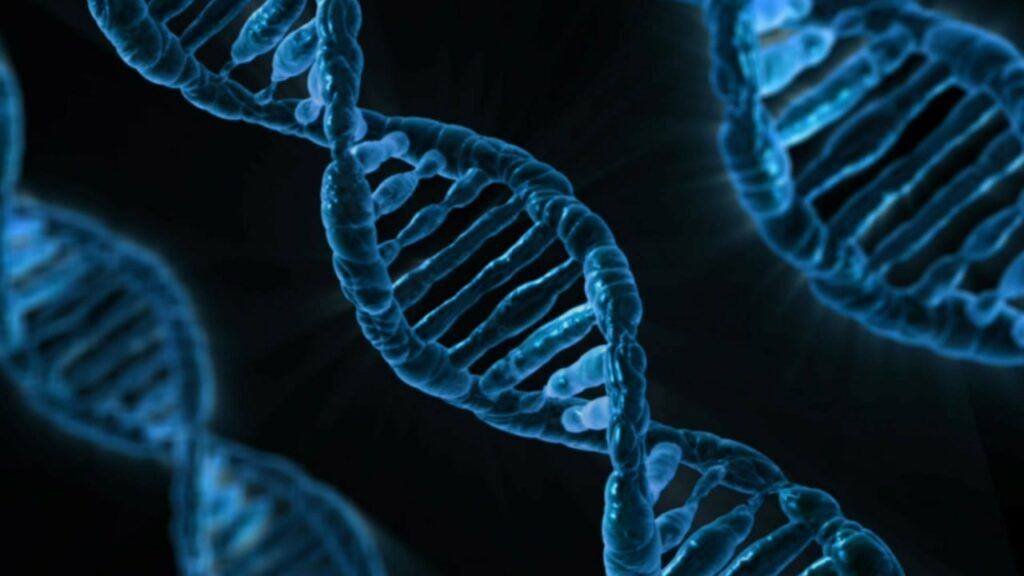Identical twins have always been a topic of fascination, and the question of whether they can be different heights is a common one. The answer is yes, identical twins can be different heights. While identical twins share the same genetic makeup, there are several factors that can cause them to differ in height.
Understanding Identical Twins
Identical twins, also known as monozygotic twins, are formed when a single fertilized egg splits into two embryos. As a result, identical twins share the same genetic material, including their DNA. This means that they have the same physical characteristics, such as eye color, hair color, and facial features. However, while identical twins share the same genetic makeup, they can still have physical differences, including differences in height.
Genetic and Physical Differences in Twins
While identical twins share the same genetic material, there are other factors that can cause them to have physical differences. These include differences in the womb environment, such as differences in the amount of nutrients each twin receives, as well as differences in the way each twin develops. Additionally, environmental factors, such as diet and exercise, can also play a role in height differences between identical twins.
Key Takeaways
- Identical twins can be different heights due to differences in the womb environment and other physical factors.
- Environmental factors, such as diet and exercise, can also play a role in height differences between identical twins.
- While identical twins share the same genetic material, they can still have physical differences, including differences in height.
Understanding Identical Twins

Identical twins, also known as monozygotic twins, are twins that develop from a single fertilized egg. This means that they share the same genetic material and genetic makeup. As a result, they are usually very similar in appearance and have many of the same physical and personality traits.
However, despite having the same genetic material, identical twins can still have some physical differences, including differences in height. This is because height is influenced by a combination of genetic and environmental factors.
While identical twins share the same DNA, they may not have the same number of copies of certain genes. Additionally, environmental factors such as nutrition, exercise, and illness can also play a role in determining height.
It is also important to note that height is influenced by both the X and Y chromosomes. While identical twins share the same X chromosome, they may have different Y chromosomes, which can also affect their height.
In summary, while identical twins share the same genetic material, they can still have differences in height due to a combination of genetic and environmental factors.
Genetic and Physical Differences in Twins
Identical twins are known for their striking resemblance to each other. However, it is a common misconception that identical twins are completely identical in every aspect. In reality, there are several genetic and physical differences that can occur between identical twins.
One of the most noticeable physical differences that can occur between identical twins is their height. While identical twins share the same DNA, environmental factors can influence their growth and development, leading to differences in height. For example, if one twin has a poor diet or suffers from a chronic illness during childhood, they may not grow as tall as their twin.
In addition to height, identical twins can also have differences in their appearance, such as eye color, hair color, and the presence of freckles. These differences are the result of random mutations that occur during embryonic development, which can lead to variations in genes that control physical traits.
Twin studies have been instrumental in understanding the genetic and environmental factors that contribute to differences in physical traits between identical twins. By studying twins who were raised in different environments, researchers have been able to determine the extent to which genetics and environmental factors influence physical traits.
Overall, while identical twins share the same DNA, it is important to recognize that they can have differences in physical traits due to environmental factors and random mutations.

Height Differences in Identical Twins
It is commonly believed that identical twins are always the same height since they share the same DNA. However, this is not always the case. While identical twins share the same genetic makeup, there are several factors that can cause height differences between them.
One of the main factors that can cause height differences in identical twins is environmental factors. Even though identical twins share the same genes, their environments can differ significantly. For example, one twin may have a healthier diet or engage in more physical activity than the other, which can lead to differences in height.
Another factor that can cause height differences in identical twins is random genetic variation. While identical twins share the same DNA, there are still small differences that can occur during development. These genetic variations can affect height, among other things.
It is also important to note that identical twins may not always have the same growth patterns. While they may start out the same height at birth, differences in growth rates can cause height differences to emerge over time. For example, one twin may experience a growth spurt earlier than the other, leading to a height difference.
In conclusion, while identical twins share the same genetic makeup, there are several factors that can cause height differences between them. Environmental factors, random genetic variation, and differences in growth patterns can all contribute to differences in height.
Factors Affecting Height in Twins
Height is a complex trait that is influenced by various factors, including genetics, environment, and nutrition. Identical twins share the same genetic material, but they can still differ in height due to environmental and other factors.
Environmental Factors
Environmental factors, such as nutrition, play a crucial role in determining the height of twins. Studies have shown that twins raised in different environments can have different heights. For example, twins raised in families with better nutrition and access to healthcare tend to be taller than those raised in poorer environments.
Womb and Placenta
The womb and placenta also play a role in determining the height of twins. The placenta is responsible for providing nutrients and oxygen to the developing fetuses. If one twin receives more nutrients than the other, they may grow taller. Additionally, if one twin is positioned closer to the top of the uterus, they may have more room to grow and develop, resulting in a taller height.
Nutrients
Nutrition is a crucial factor in determining the height of twins. A diet rich in protein, vitamins, and minerals is essential for proper growth and development. Twins who receive adequate nutrition during childhood and adolescence are more likely to grow taller than those who do not.
Hormones
Hormones, such as growth hormone, thyroid hormone, and sex hormones, also play a role in determining the height of twins. Growth hormone is responsible for stimulating growth and development in children, while thyroid hormone regulates metabolism. Sex hormones, such as estrogen and testosterone, also influence growth and development.
Nature and Nurture
The height of twins is influenced by both nature and nurture. Genetics play a significant role in determining height, but environmental factors such as nutrition and hormones can also impact growth and development. Twins who are genetically identical but raised in different environments may have different heights due to these factors.
In conclusion, the height of identical twins can vary due to a combination of genetic and environmental factors. Nutrition, hormones, and the womb and placenta can all impact growth and development. Understanding these factors can help parents and healthcare providers promote healthy growth and development in twins.
Other Differences in Identical Twins
While identical twins share the same DNA, they can still have some differences. In addition to height, there are other physical and personality traits that can vary between twins.
Weight
Identical twins can have different weights. This can be due to differences in diet, exercise habits, or even hormonal imbalances. While twins may have similar body types, they can still have different amounts of muscle and fat.
Personalities
While identical twins may have similar personalities, they can still have differences. This can be due to environmental factors, such as different life experiences or social interactions. Twins may also have different interests and hobbies, which can shape their personalities.
ESP
Some studies have suggested that identical twins may have a stronger connection than fraternal twins when it comes to extrasensory perception (ESP). However, this is still a controversial topic and more research is needed to confirm these findings.
Fingerprints
While identical twins share the same DNA, they do not have the same fingerprints. Fingerprints are formed by random variations in the womb, which means that even identical twins will have unique fingerprints.
In conclusion, while identical twins share many similarities, they can still have differences in height, weight, personality, and other traits. These differences can be due to a variety of factors, including environmental influences and random variations in development.

Twin Syndromes and Their Impact
Identical twins are often assumed to be exactly the same in every way, but there are several factors that can cause them to differ. One of these factors is twin syndromes, which are conditions that can affect one or both twins during pregnancy.
One such syndrome is twin-to-twin transfusion syndrome (TTTS), which occurs when blood vessels in the placenta connect the circulatory systems of the twins. This can lead to one twin receiving too much blood and the other twin not receiving enough, resulting in differences in growth and development. In some cases, this can lead to significant differences in height between the twins.
Another factor that can impact the height of identical twins is birth order. In some cases, the first-born twin may be slightly taller than the second-born twin. This is thought to be due to a variety of factors, including differences in the amount of space available in the womb and differences in the timing of birth.
Despite these factors, it’s important to note that most identical twins will be very similar in height. While there may be slight differences in some cases, it’s unlikely that these differences will be significant enough to be noticeable to the naked eye.
Overall, while twin syndromes and birth order can impact the height of identical twins, most twins will be very similar in this regard. It’s important to remember that each twin is an individual with their own unique characteristics and traits, and that height is just one small part of who they are.
Comparison with Other Types of Twins
While identical twins are the most well-known type of twins, there are other types of twins that exist. One such type is fraternal twins, which are also known as dizygotic twins. Fraternal twins result from the fertilization of two different eggs by two different sperm. This means that fraternal twins are genetically different from each other, just like any other siblings.
Compared to identical twins, fraternal twins are less likely to be the same sex, and they do not share the same placenta. As a result, fraternal twins may have different heights, just like any other siblings. In fact, fraternal twins can be as different from each other as any two siblings born at different times.
Singletons, or individuals who are not twins, can also have different heights due to a variety of factors, including genetics, nutrition, and environment. However, unlike twins, singletons do not have a genetically identical sibling to compare their height to.
Chromosomal defects can also affect height, and can occur in both singletons and twins. However, the likelihood of chromosomal defects is not higher in twins than in singletons.
Finally, the ovulation cycle of the mother can also play a role in the height of twins. If the mother ovulates more than one egg during a single cycle, this can result in the birth of fraternal twins. However, this does not necessarily mean that the twins will be different heights, as height is influenced by a variety of factors beyond genetics.
Role of Epigenetics in Twin Differences

Epigenetics refers to the changes in gene expression that occur without altering the underlying DNA sequence. These changes can be influenced by various environmental factors, such as diet, stress, and exposure to toxins. Epigenetic modifications can occur during embryonic development, but they can also be influenced by environmental factors throughout an individual’s life.
In the case of identical twins, epigenetic differences can arise due to differences in their individual environments. For example, if one twin is exposed to more stress during their life than the other, this can lead to differences in epigenetic modifications. These modifications can affect gene expression, leading to differences in height or other physical characteristics.
Additionally, epigenetic modifications can occur randomly during embryonic development, leading to differences in gene expression between identical twins. This can explain why even genetically identical twins can have differences in height, weight, and other physical characteristics.
Despite the role of epigenetics in twin differences, it is important to note that genetics still play a significant role in determining physical characteristics. While epigenetic modifications can influence gene expression, they do not alter the underlying DNA sequence. Therefore, identical twins will still share the same genetic code, even if epigenetic modifications lead to differences in physical characteristics.
Influence of Childhood and Puberty on Twin Differences
Childhood and puberty are two critical periods in a person’s life that can significantly impact their growth and development. Identical twins, despite having the same genetic makeup, can still differ in height due to various factors that influence their growth during these stages.
During childhood, environmental factors such as nutrition, physical activity, and overall health can play a significant role in determining a child’s height. If one twin has a more nutritious diet or engages in more physical activity than the other, they may end up being taller. Additionally, illness or injury during childhood can also affect a child’s growth and lead to differences in height between twins.
Puberty is another critical period that can influence twin differences in height. Hormones play a significant role in the growth and development of a child during puberty, and differences in hormone levels between twins can lead to differences in height. For example, if one twin has higher levels of growth hormones than the other, they may end up being taller.
It’s also worth noting that identical twins are not always physically identical at birth. Differences in the length of the umbilical cord, which provides nutrients and oxygen to the developing fetus, can affect a baby’s growth and development in the womb. This can result in differences in birth weight and, potentially, height later in life.
In summary, while identical twins share the same genetic makeup, various environmental and biological factors can influence their growth and development during childhood and puberty, leading to differences in height.
Related Posts:
Frequently Asked Questions
Do identical twins have the same size pp?
Yes, identical twins typically have the same size pp. This is because they share the same genetic code, which determines the size and shape of their bodies.
Can identical twins have different body types?
Yes, identical twins can have different body types. While they share the same genetic code, their lifestyle and environment can affect their body type. For example, one twin may be more active or have a different diet than the other twin, leading to differences in muscle mass and body fat.
Can one identical twin be smaller than the other?
Yes, it is possible for one identical twin to be smaller than the other. This can be due to differences in nutrition or health during pregnancy, or differences in lifestyle and environment after birth.
Can twins be different races?
No, twins cannot be different races. Race is determined by genetics, and identical twins share the same genetic code.
What is the highest height difference in twins?
The highest height difference in twins recorded in the Guinness World Records is 17.5 inches. However, it is important to note that such extreme height differences are rare.
Can identical twins grow up looking different?
Yes, identical twins can grow up looking different. While they share the same genetic code, their environment and lifestyle can affect their physical appearance. For example, one twin may have a different haircut or style, leading to differences in their appearance.

Iesha is a loving mother of 2 beautiful children. She’s an active parent who enjoys indoor and outdoor adventures with her family. Her mission is to share practical and realistic parenting advice to help the parenting community becoming stronger.
